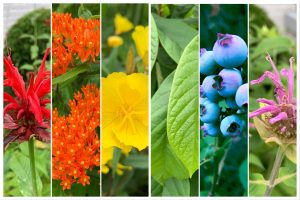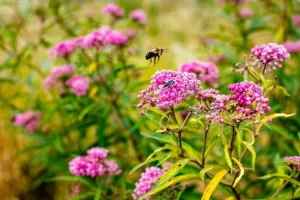Gardening is a rewarding and therapeutic hobby, but it can also have a significant impact on the environment. One way to make your gardening more sustainable and environmentally friendly is to embrace native gardening. Native gardening involves growing plants native to your area, which saves water, supports local wildlife and reduces the need for pesticides and fertilizers. In this article, we will explore important tips for successful native gardening.
1. Choose Native Plants Wisely
The first step in native gardening is choosing plants that are suitable for your region. Native plants adapt to local climate and soil conditions, making them more resilient and easier to care for. Research the native plants in your area and choose varieties that suit the purpose of your garden, whether that is attracting pollinators, providing food for wildlife, or creating a beautiful landscape.
2. Understand Soil and Sun Requirements
Different native plants have different soil and sunlight requirements. Some thrive in full sun, while others prefer partial or full shade. It is crucial to understand the specific needs of the plants you choose and match them to the correct location in your garden. Perform a soil test to determine the pH and composition of the soil and make amendments as necessary to create an ideal environment for native plants.
3. Practice Sustainable Watering
One of the important benefits of native gardening is that native plants adapt to local rainfall patterns. Once established, they generally require less water than non-native species. Pay attention to watering, especially during the plants’ first year, to help them establish a deep root system. Consider using a drip irrigation system or rain barrels to efficiently collect and distribute rainwater.
4. Mulch and Weed Management
Applying a layer of mulch around native plants helps retain moisture, suppress weeds, and maintain stable soil temperatures. Organic mulch, such as wood chips or shredded leaves, is a good option. Check for weeds regularly and remove them immediately to avoid competition for resources and minimize the need for herbicides.
5. Encourage Wildlife
Native plants are not only beautiful, but also provide vital habitat and food for local wildlife, including birds, bees, and butterflies. Incorporating a variety of native plants that bloom at different times provides a constant source of nectar and pollen. Bird feeders, birdhouses, and butterfly ponds can also attract and support wildlife in your garden.
6. Embrace Natural Pest Control
Native gardens generally require fewer pesticides because they attract the natural enemies of garden pests. Ladybugs, lacewings, and predatory wasps are just a few examples of beneficial insects that help keep your garden in balance. Avoid using broad-spectrum pesticides that can harm these beneficial organisms.
7. Be Patient and Flexible
It may take some time for native gardening to reach its full potential. Be patient and let your garden develop naturally. Some plants can thrive while others struggle. Be willing to make adjustments and learn from your experiences to create a thriving native garden over time.
8. Regular Maintenance
Although native gardens generally require less maintenance than traditional gardens, they do require some care and attention. Check your plants regularly for signs of disease or stress and resolve any problems immediately. Keeping your garden looking its best may require pruning, decapitating, and occasional fertilizing.
9. Educate Yourself
Native gardening is an ongoing learning process. Stay informed about native plants in your area and their ecological importance. Attend local garden seminars, join a native plant association, or consult a local expert to expand your knowledge and make your garden more successful.
10. Share your Knowledge
Once your native garden is thriving, consider sharing your experience and knowledge with others. Educate your friends, neighbors, and community about the benefits of native gardening. By encouraging them to adopt this eco-friendly approach to landscaping, you can work together to create a network of native gardens that support local biodiversity.
Conclusion
Native gardening is not only a way to create a beautiful and sustainable garden, but also a way to contribute to the protection of your local environment. By following these important tips, you can begin a successful native gardening journey that saves water, supports wildlife, and reduces your carbon footprint. As your own garden blooms, you’ll enjoy the beauty of nature in your backyard while making a positive impact on your community and the earth.
FAQs
1. What is native gardening?
Native gardening involves planting and caring for native plant species that occur naturally in your area. This is an environmentally friendly and sustainable approach to landscaping that helps conserve water, supports local wildlife, and reduces the need for pesticides and fertilizers.
2. Why should I consider native gardening?
There are many benefits to native gardening. It saves water because native plants adapt to local rainfall patterns. It supports local wildlife by providing habitat and food sources. Native gardens are generally low maintenance and help protect local ecosystems.
3. How do I choose the right native plants for my garden?
Research native plants in your area. Consider factors such as soil type, sunlight, and the purpose of the garden (such as attracting pollinators or creating a view). Local nurseries and gardening organizations can provide valuable guidance.
4. Do native gardens need less water than traditional gardens?
Yes, once established, native gardens generally require less water than traditional gardens. Native plants adapt to local conditions and thrive with minimal irrigation. However, it is crucial to provide adequate water during the first year so that they can develop a deep root system.
5. How do I attract wild animals to my own garden?
To attract wildlife, add a variety of native plants that provide food sources and habitat. Plant species that produce nectar, berries, or seeds for birds, bees, and other wildlife. You can also add bird feeders, birdhouses, and water features to make your garden more attractive to animals.



